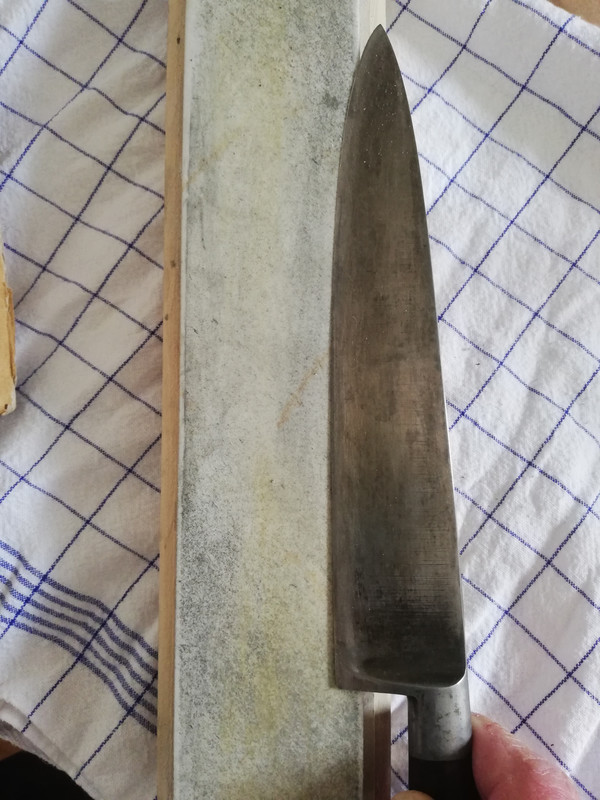How to 'see' thinning with eyes and fingertips
(1) The easiest way to see thinning is to thin at the heel, where you can see the choil. See where the knife gets thinner, or the curve changes shape. Then try to repeat what you did along the rest of the blade. This is how I started out.
The ashi ginga has a very consistent convex grind, so this should be representative of how it will likely cut. Sometimes, the choil is actually very very slightly thinner than the cross section of the knife right after the choil. This is pretty common in knives I've bought, due to how they are made. Also there may be very very tiny 'overgrinds' that are slight concavities. This again, is common and can come out with thinning. And of course, the choil could not very well describe how the knife may be like towards the tip. The choil also does not describe the grind of the part above the choil, the blade face, which does play a role in food release, but next in line compared to near the edge, and the middle of the blade.
(2) I also check with my fingertips move from spine to edge. This tells me how smoothly the knife will go through the cut, because this is how smooth the grind is. A sudden jump can be good for food release, but by far for non-wide bevel knives like the Ginga, I like the smoother cut. When you do this, you can wet the blade a little if it helps, to help your fingers glide.
(3) I check the thickness at the same distance from the edge along the entire length of the blade. I repeat for each distance from the edge. This is most critical right above the edge, which is the thinness that determines how easily the knife sinks (sometimes viciously) into food. Note that distal taper also comes into play, and the edges near the tip are often thinner than near the heel. This isn't necessary, it's just a built in feature because some people like thin tips to go through dense things that thicker tips get stuck in, and people like a little thicker heels for food release and a confident feel when bashing there.
(4) The hardest is to check the blade in light to see the contouring of the knife. This is hard because the blade will have the thinning marks, which makes things difficult. Training the eye to 'see' curves takes a while. What I can say is that convex will bend an image one way and concave will bend it another way.
How many passes for a ginga on a 400?
I guess start with 10 swipes (back and forth = 1) on each side, right behind the edge. Then resharpen as normal on a higher grit stone. Cut, and repeat for more "performance", or less resistance going through food. If the surface finish is kinda grabby, you can polish that out with a higher grit stone, sandpaper, bar keeper's friend, or metal polish (though this doesn't help much with deep scratches).
"Proper" is up to how little resistance you like, and how confident feeling you want the knife. Or if the edge bends or chips or crumbles. I do have a ginga as well, and I've found an optimum edge thinness, and more than that the edge starts to bend a bit after going through certain foods. I could try again, though, or thin higher up the blade.






